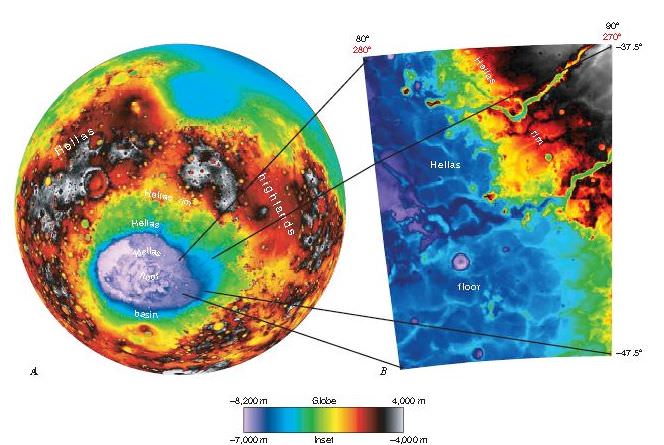[/caption]
Was the expansive Hellas Basin on Mars at one time a giant lake? A new geologic mapping project shows evidence of sedimentary deposits consistent with what would relate to large standing bodies of water. Fine-layered outcrops around the eastern rim of Hellas basin have been interpreted as a series of sedimentary deposits resulting from erosion and transport of highland rim materials into a basin-wide standing body of water. "This mapping makes geologic interpretations consistent with previous studies, and constrains the timing of these putative lakes to the early-middle Noachian period on Mars, between 4.5 and 3.5 billion years ago," said Dr. Leslie Bleamaster, research scientist at the Planetary Science Institute.
Hellas basin, more than 2,000 km across and 8 km deep, is the largest recognized impact structure on the Martian surface.
Using data from a variety of spacecraft, including the Viking Orbiter, the Mars Global Surveyor and Mars Odyssey, the researchers characterized the geologic materials and processes that have shaped the Hellas Planetia region on the southern hemisphere of Mars.
The mapping team searched through high-resolution images and found the eastern part of Hellas Planitia, where the fine-layered floor deposits were discovered, "is unique in nature representing a confluence between sedimentary sources and sinks."
"Our mapping and evaluation of landforms and materials of the Hellas region from the basin rim to floor provides further insight into Martian climate regimes and into the abundance, distribution, and flux of volatiles through history," Bleamaster said.
The mapping project reinforces earlier research that initially proposed Hellas-wide lakes citing different evidence in the west, he said. Take a look a
the new map along with a explanatory pamphlet.
Source: Planetary Science Institute
 Universe Today
Universe Today
